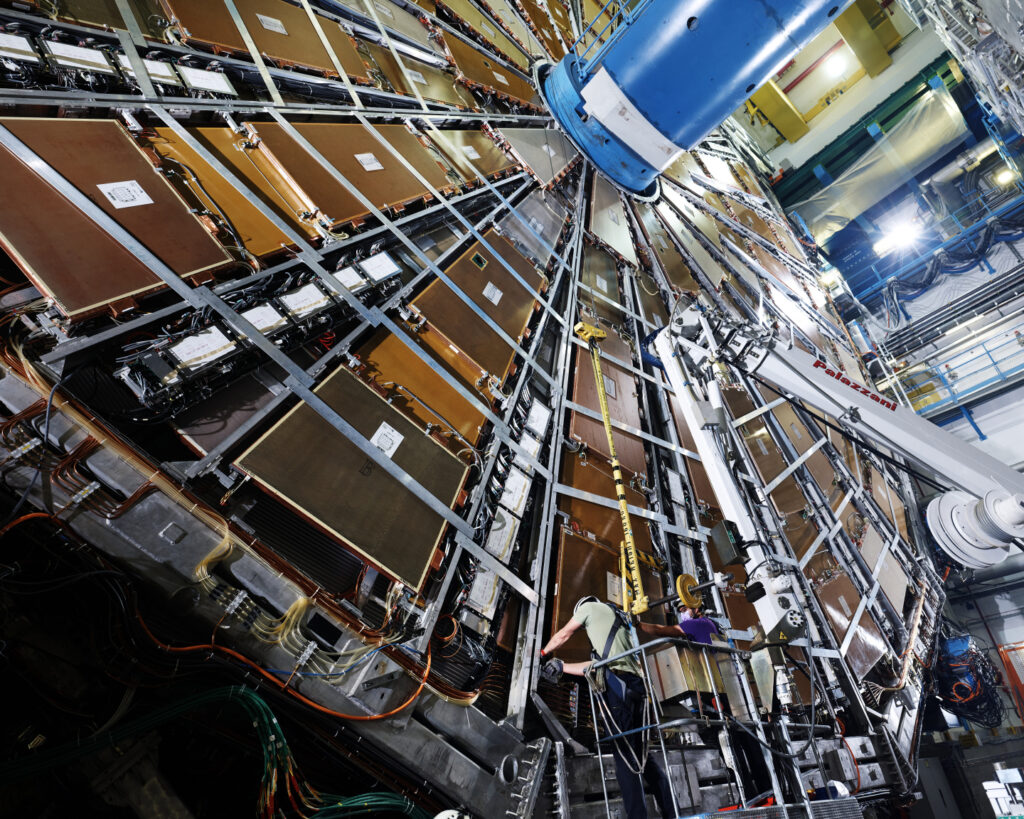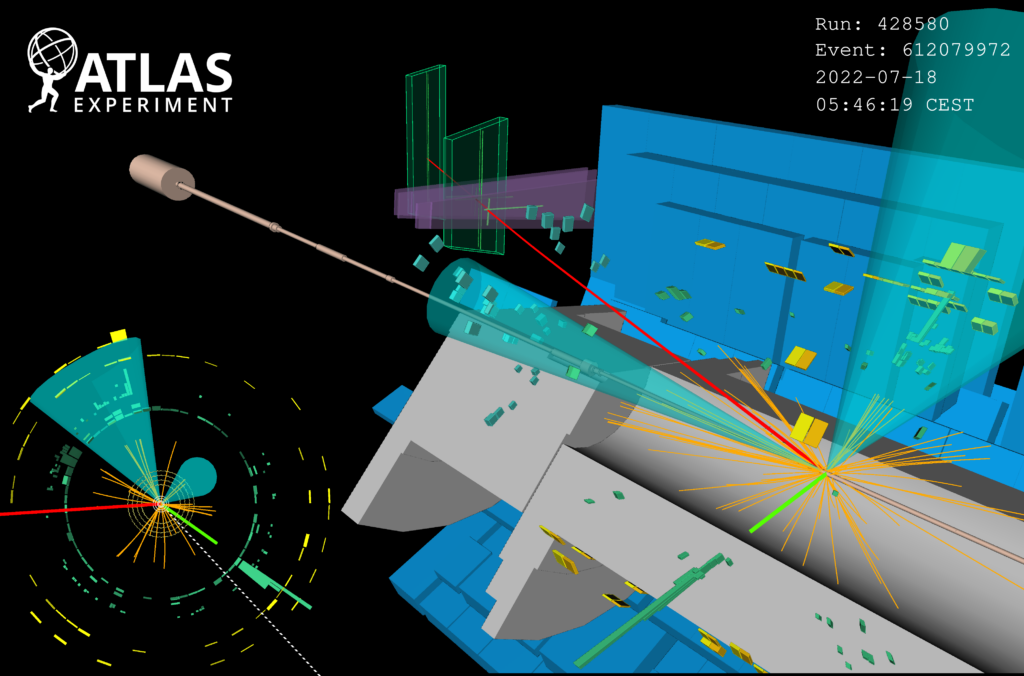Local Manager: Paolo Camarri; PI: Massimo Corradi (RM1).

ATLAS is one of the main experiments currently operating at the Large Hadron Collider (LHC) at CERN in Geneva, the world’s largest particle accelerator, and involves over 6,000 members. The experiment’s enormous detector — more than 45 meters long, 25 meters wide, and 25 meters high, weighing around 7,000 tons — studies proton and heavy-ion collisions produced by the LHC to investigate the laws that govern the fundamental particles of our Universe. ATLAS scientists work on high-precision measurements within the Standard Model, the theory that describes the elementary particles known so far, culminating in 2012 with the discovery of the Higgs boson together with their colleagues from the CMS experiment. They are also searching for signs of new physics, beyond the Standard Model, to address some of the major unanswered questions: What is dark matter? Why is the Universe made of matter and not antimatter? Do extra dimensions exist in our Universe? And many more…

The ATLAS group at Roma Tor Vergata plays a fundamental role in the construction and operation of detectors known as Resistive Plate Chambers (RPCs), used in the ATLAS experiment for detecting muons with extremely high time resolution. Currently, a large part of the group’s effort is focused on the Phase-2 upgrade of ATLAS, which involves a major upgrade of the experimental apparatus in preparation for data taking during the High-Luminosity LHC (HL-LHC) campaign, starting in 2029/2030. The group is also very active in studies related to top quark physics, the heaviest elementary particle ever discovered, with significant contributions to many analysis activities, including precision measurements of the top quark mass. Other areas of focus include beauty quark physics and performance studies related to muon reconstruction and identification.

References:
The full list of publications from the ATLAS Collaboration can be found at: https://twiki.cern.ch/twiki/bin/view/AtlasPublic/Publications
Performance of the RPC detectors, built and operated with major contributions from the Roma Tor Vergata group, as achieved during LHC Run 2 (2015–2018), is described in the article: https://doi.org/10.1088/1748-0221/16/07/P07029
The Phase-2 upgrade of the ATLAS Muon Spectrometer, in which the Roma Tor Vergata group plays a key role, is detailed in this document: https://cds.cern.ch/record/2285580?ln=it
The top quark mass measurement, with significant contributions from the Roma Tor Vergata group, is available here: https://doi.org/10.1007/JHEP06%282023%29019













































































































